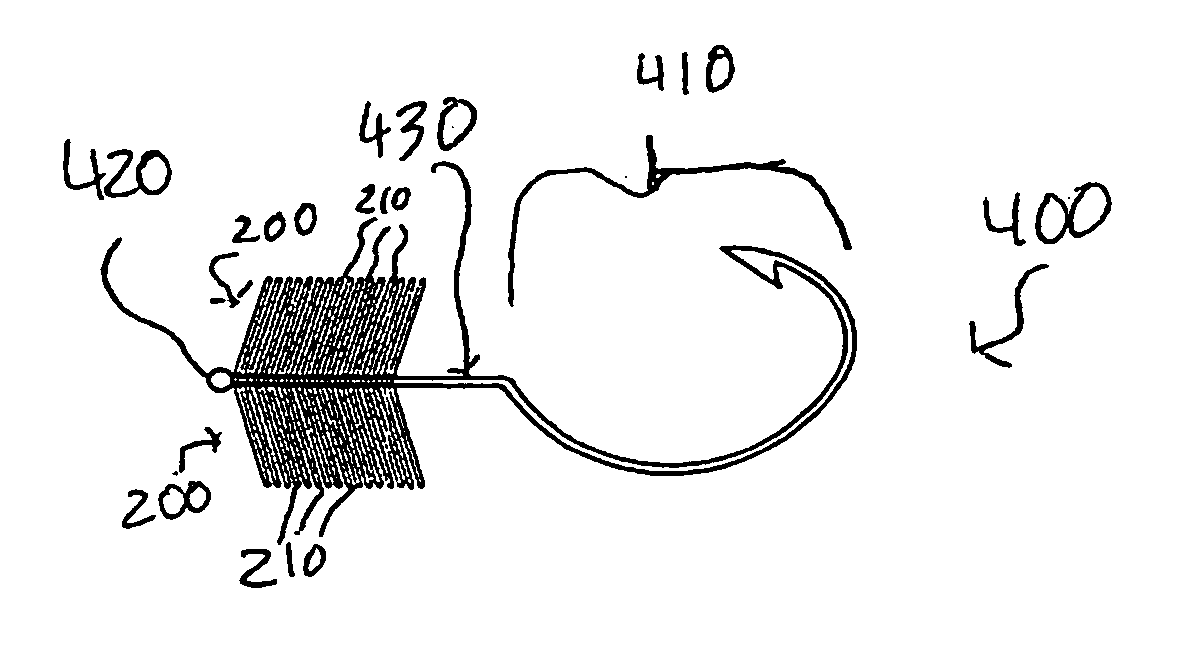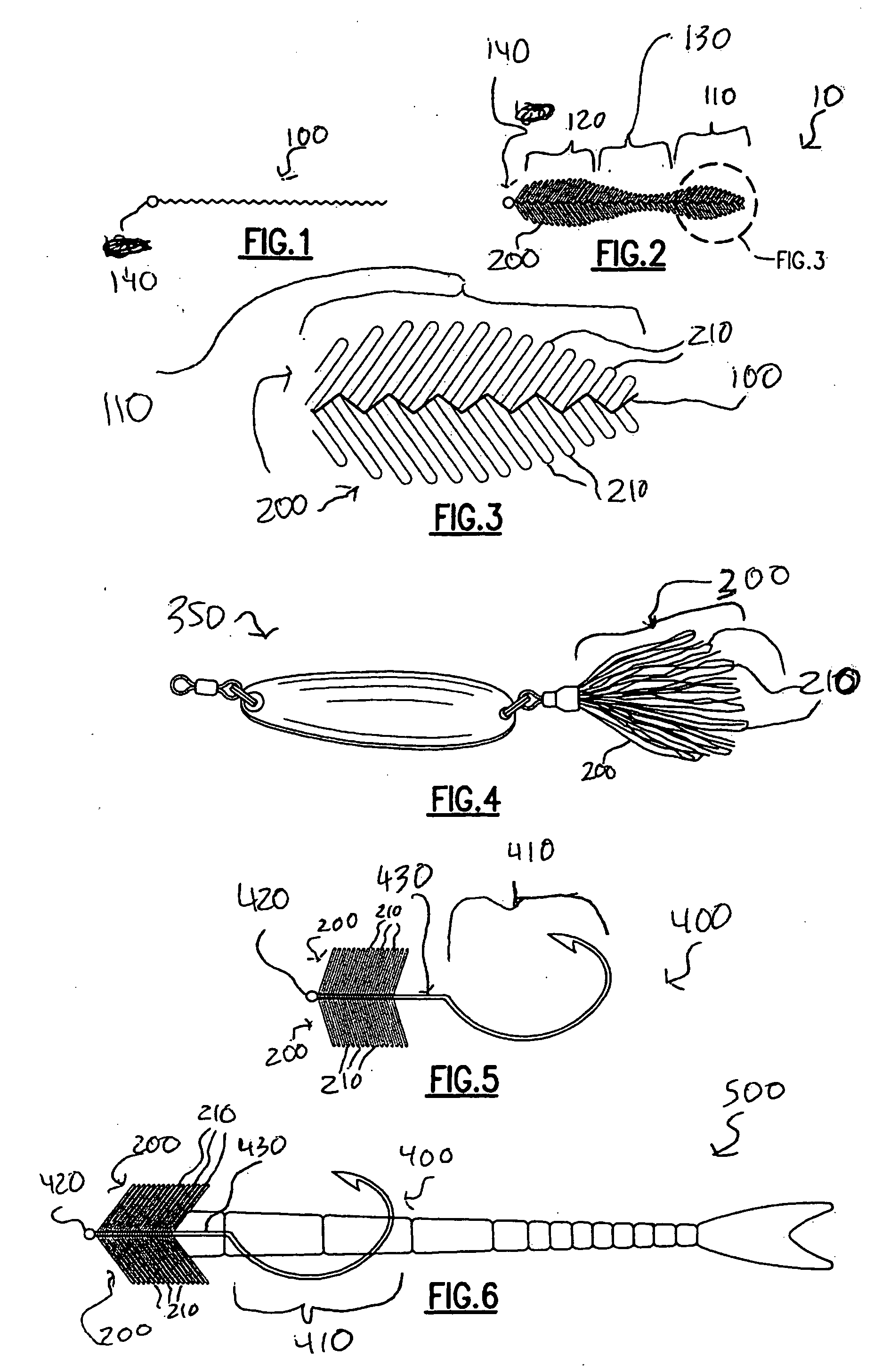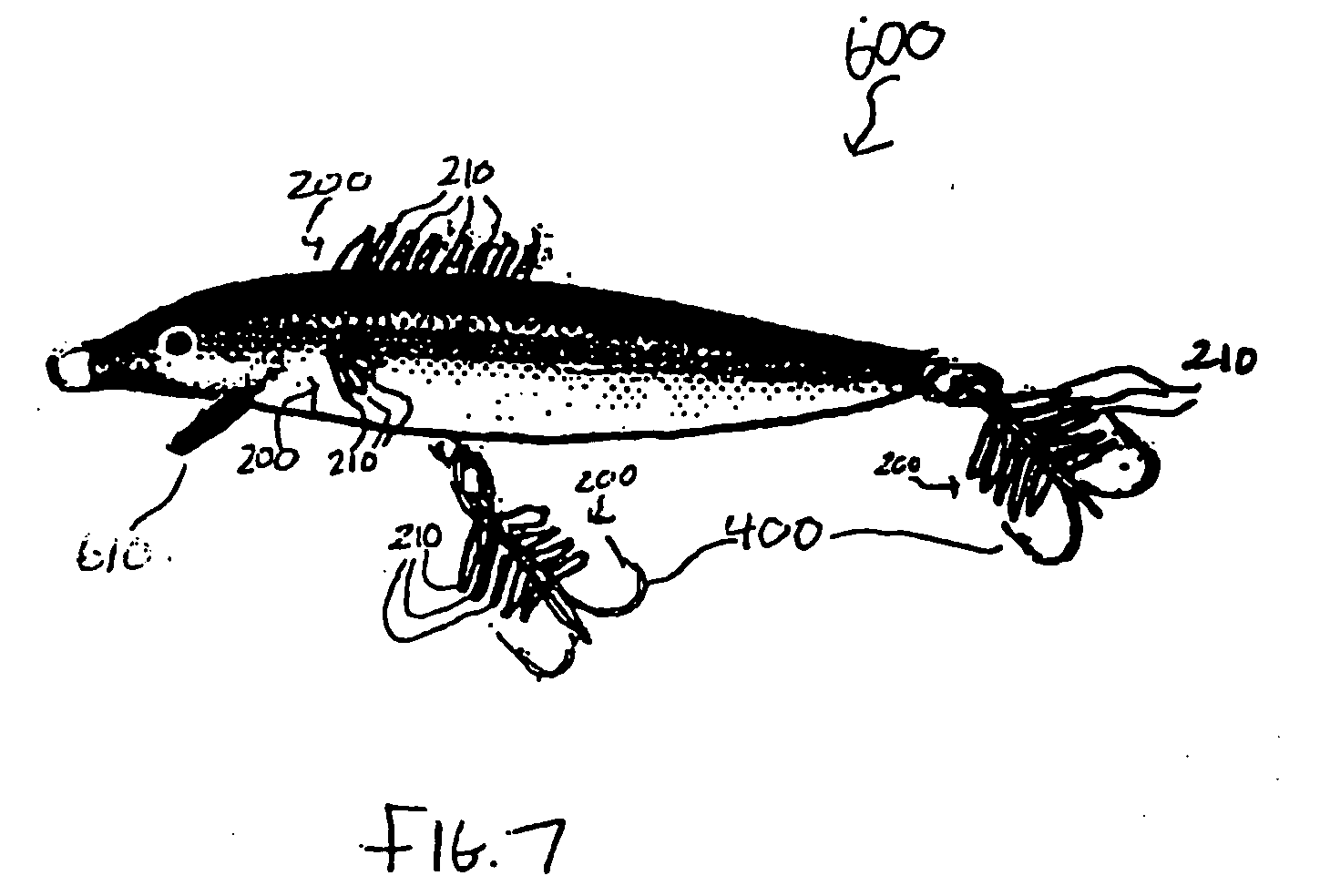Fishing lure including looped fiber-based materials
- Summary
- Abstract
- Description
- Claims
- Application Information
AI Technical Summary
Benefits of technology
Problems solved by technology
Method used
Image
Examples
Embodiment Construction
[0020] Referring initially to FIGS. 1 and 2, a plug type fishing lure 10 is shown that includes a shank 100 with a matrix of fiber-based material 200 attached or bundled thereto. The term “shank,” as recited herein, refers to the main body of a lure or the main body of a lure attachment (e.g., a hook). As is best illustrated in FIG. 2, the shank 100 has a tail portion 110, an eye portion 120 and a shank body 130 therebetween. The eye portion 120 of the shank 100 culminates in an opening (e.g., an eye) 140, at which a fishing line (not shown) or other suitable fishing equipment can be attached.
[0021] In an exemplary embodiment of the present invention, and as depicted in FIGS. 1 and 2, the shank 100 is substantially straight / linear and is made of a thin, durable material, e.g., a segment of wire cord. However, it should be noted that shape characteristics of the shank 100 depicted in FIGS. 1 and 2 can be varied in accordance with the present invention for various reasons including, ...
PUM
 Login to View More
Login to View More Abstract
Description
Claims
Application Information
 Login to View More
Login to View More - R&D
- Intellectual Property
- Life Sciences
- Materials
- Tech Scout
- Unparalleled Data Quality
- Higher Quality Content
- 60% Fewer Hallucinations
Browse by: Latest US Patents, China's latest patents, Technical Efficacy Thesaurus, Application Domain, Technology Topic, Popular Technical Reports.
© 2025 PatSnap. All rights reserved.Legal|Privacy policy|Modern Slavery Act Transparency Statement|Sitemap|About US| Contact US: help@patsnap.com



